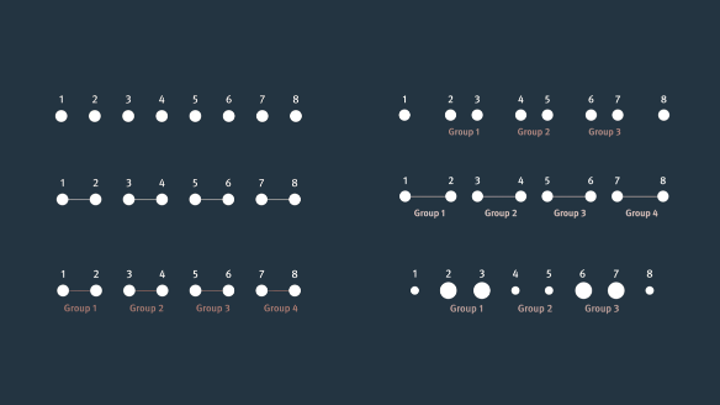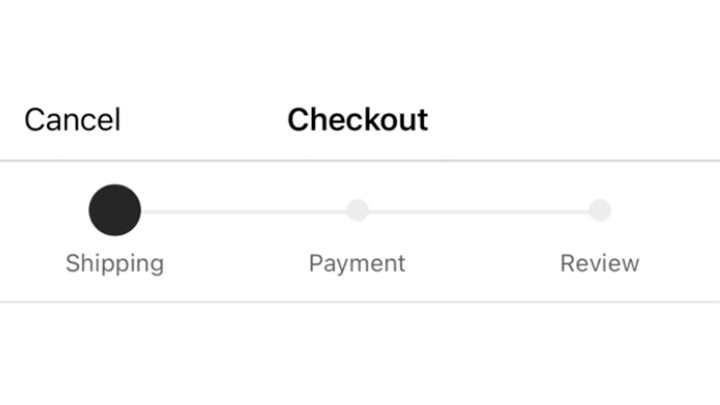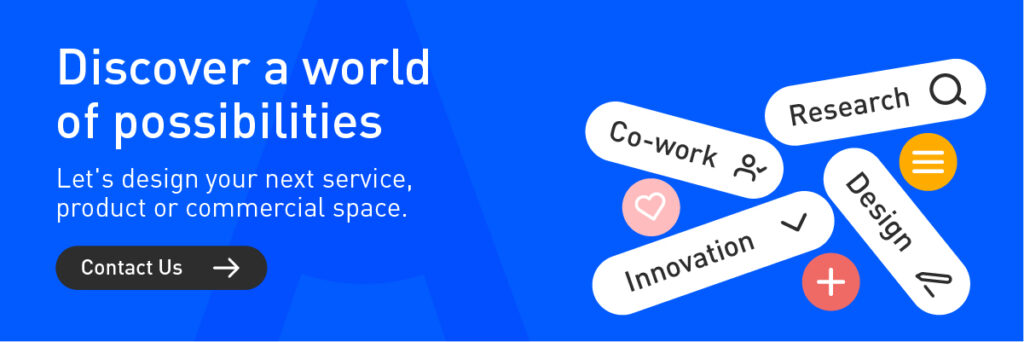In this series on improving usability and conversion in digital products, we’ve previously explored crucial principles like the serial position effect, Hick’s Law, Fitts’s Law, the Von Restorff effect, and the Zeigarnik effect. In Part 3, we continue to explore key principles that directly impact how users interact with and learn within digital solutions. Here, we’ll focus on three additional UX/UI principles that can significantly enhance user experience (UX) and drive higher conversion rates.
Key Principles to Improve User Experience in Digital Products
The Law of Uniform Connectedness: Suggesting Key Relationships
The Law of Uniform Connectedness, a Gestalt principle introduced by Stephen Palmer and Irvin Rock in the 1990s, states that elements visually connected are perceived as related, even when proximity or similarity would suggest otherwise. This principle emphasizes the importance of visual cues in guiding users through your digital product.

Example: Visual grouping using lines and different sizes.
Practical application in digital products:
- Use this principle to suggest relationships between various UI elements.
- Group functions of similar nature by visually connecting them using colors, lines, frames, or other shapes.
- Use tangible visual connectors (lines, arrows, etc.) between elements to establish relationships.
- Display context or emphasize the relationship between similar elements.

Example: In payment forms, step diagrams are often connected by a line to indicate that they belong to the same process.

Example: Google Maps uses connectedness by sharing a border between two search boxes to show a strong relationship, while a third, unrelated box is kept visually separate.

The Active User Paradox: Designing for Immediate Action
This concept is essential in UX design, defined by Mary Beth Rosson and John Carroll in 1987. It asserts that users never read manuals, they start using software immediately. This is a paradox because, in the long run, users could save time if they invested some initial effort into optimizing and learning the system. However, people don’t behave ideally rationally in real life. Users are driven by the need to complete immediate tasks and are unwilling to spend time upfront reading documentation before using a product.
Implications for digital product design:
- Avoid traditional product walkthroughs, which often consist of sequential overlays that block immediate interaction and frustrate active users.
- Implement embedded elements like tooltips that provide useful, timely information to support learning through discovery.
- Consider progressive onboarding to gradually introduce features and build user familiarity and confidence, avoiding information overload.
- Offer “getting started” templates or checklists to guide users in a safe environment while they actively learn core features.

Example: Notion provides a “getting started” template with a checklist for beginners to explore key features step by step.

Example: Uber, Zomato, and Spotify use contextual tooltips to offer useful, timely information.
Selective Attention: Guiding the User’s Focus
Selective attention is the cognitive process of focusing on certain stimuli while ignoring irrelevant information. This is particularly important in UX/UI design, as users have limited cognitive capacity and may get overwhelmed by too much information.
Implications for digital product design:
Designers must guide user attention, prevent them from feeling overwhelmed or distracted, and help them find relevant information or actions.
- Avoid “banner blindness”: don’t make content look like ads or place key content and ads in the same visual section, as users tend to ignore anything resembling advertising.
- Beware of “change blindness”: significant interface changes can go unnoticed due to human attention limitations. Review your designs to avoid simultaneous changes that can divert attention.
- Don’t expect users to complete two complex tasks at once, especially if they’re not automated or if efficiency drops. It’s more effective to display a single task or form (e.g., only login or only register) rather than both at once to reduce cognitive load and allow step-by-step processing.
Conclusions and Next Steps in Digital Product Optimization
The strategic application of the Law of Uniform Connectedness, the Active User Paradox, and Selective Attention is crucial to building digital products that are not only functional but intuitive and aligned with human behavior. By integrating these principles into your design process, you’ll enhance usability, drive conversion, and improve user loyalty.
Want to take your digital products to the next level?
At Blaster, we offer personalized consulting in UX/UI optimization and the development of innovative digital solutions.
If you’re interested in delving deeper into the concepts mentioned above, we recommend checking out the YouTube channel of Nielsen Norman Group (NNGroup, n.d.) and Jon Yablonski’s Laws of UX, where you’ll find more key principles of design and UX.
